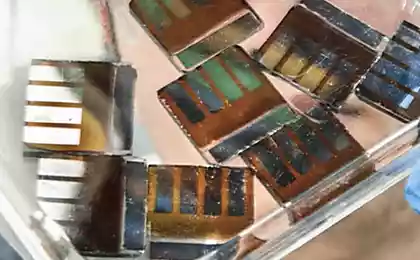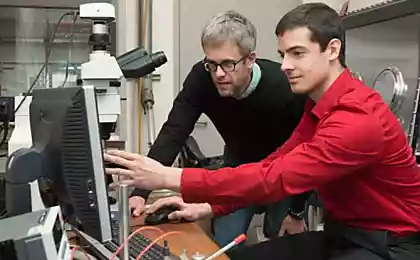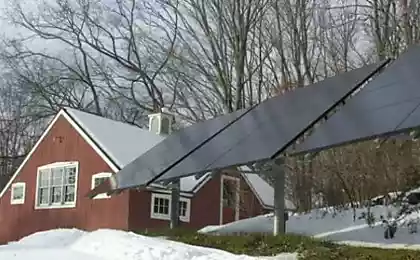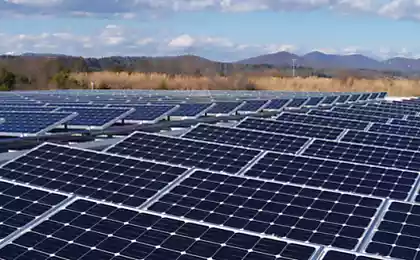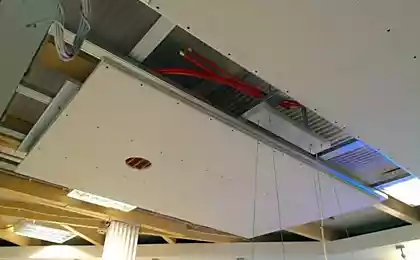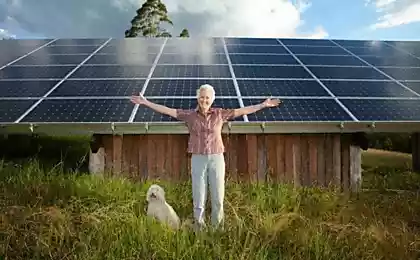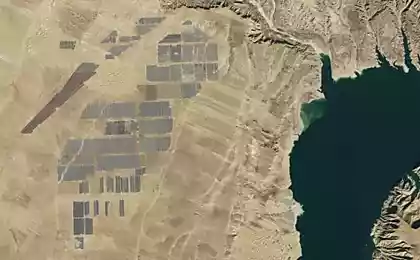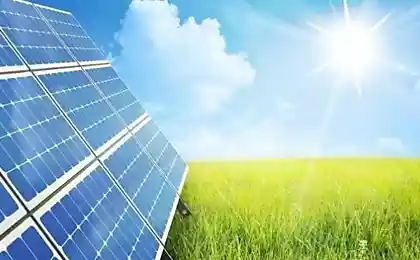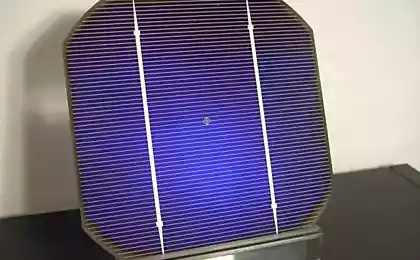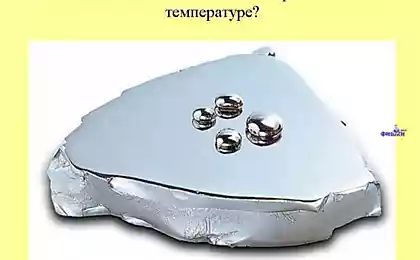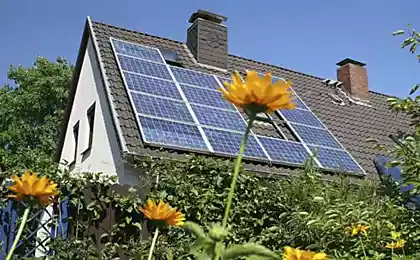446
Created by sputtering a solar panel to any surface
In the future solar cells can be sprayed or applied in another way on the Windows of skyscrapers, transportation or clothing, and it potentially will cost much cheaper than current silicon panels.
Eight million five hundred twenty thousand eight hundred sixty
This technology was not so far away. Soon the economy 42-milliardnoj industry will use the perovskite material, which can be used to gather sunlight for its inclusion into the crystal structure. It is possible that the perovskite which can be mixed in liquid solution and deposited on almost any surfaces, may be equally efficient as silicon solar cells.
One British company was already working on perovskite thin-film solar panels, which will be commercially available by the end of 2018.
Is an advanced technology, cheap solar panels, — said the Professor of the University of Tokyo Hiroshi Segawa, who heads the five-year project, funded by the Japanese government, which brings together universities and companies such as Panasonic and Fujifilm for the development of perovskite technology.
The world economic forum called the production of this material one of the top 10 new technologies of 2016. At the same time, the manufacturers of solar panels and leading universities in Europe, USA and Asia are committed to the commercialisation of the technology, stamping 1500 articles on the perovskite a year.
On the usefulness of the perovskite first began in 2006, when graduate student University Professor of the mysteries of Yokohama, Tsutomu Miyazaki, interested in how well the perovskite can convert sunlight into electricity. Although they tested a number of different materials for use in solar panels, but are unable to synthesize the crystal.
The idea of using perovskite, which has the same structure as the mineral is named for the Russian mineralogist Lev Cooper originally came to nothing lead. Its structure was poorly understood and the industry managed to firmly take up silicon as the best material for converting sunlight into electricity.
Twenty five million six hundred seventy seven thousand nine hundred eighty seven
The situation around the perovskite started to change with the first publication on the study of this material the group Miyazaki in the journal of the American chemical society in 2009. Since then, interest began to grow, especially with research showing that the conversion efficiency of sunlight perovskite is much higher than originally anticipated. The big breakthrough came in 2012, when efficiency exceeded 10%. Since then efficiency has increased to 20%, but under laboratory conditions.
In December 2016, engineers from the University of green New South Wales announced that they reached a record of 12.1% efficiency on graphic panels with an area of 16 square centimeters. This is the highest efficiency for large perovskite solar panels.Higher efficiency was recorded only on small surfaces.
In September, the Federal Polytechnic school of Lausanne in Switzerland said that their scientists have achieved efficiency of 21.6%, adding rubidium. Panasonic, a Japanese maker of silicon solar panels, took part in the Swiss project.
Researchers from Stanford University and the University of Oxford described in the October issue of the scientific journal Science their technology with the efficiency of 20.3%. The effect was achieved by stacking two perovskite cells for trapping low-energy and high-energy light waves.
Oxford Photovoltaics, which refers to Oxford University, said that working on perovskite thin-film solar panels, which can be applied directly to amorphous silicon solar cells. And they sure can bring the technology to market in 2018.
However, still not resolved a number of issues. First, researchers should devise a way to ensure the stability of the material outdoors for a long period of time. Also need improvement in the method of application on large surfaces.published
P. S. And remember, only by changing their consumption — together we change the world! ©
Source: solarpanels.com.ua/news/sozdan-material-kotoryj-pomozhet-raspylyat-solnechnye-paneli-na-lyubuyu-poverkhnost/
Eight million five hundred twenty thousand eight hundred sixty
This technology was not so far away. Soon the economy 42-milliardnoj industry will use the perovskite material, which can be used to gather sunlight for its inclusion into the crystal structure. It is possible that the perovskite which can be mixed in liquid solution and deposited on almost any surfaces, may be equally efficient as silicon solar cells.
One British company was already working on perovskite thin-film solar panels, which will be commercially available by the end of 2018.
Is an advanced technology, cheap solar panels, — said the Professor of the University of Tokyo Hiroshi Segawa, who heads the five-year project, funded by the Japanese government, which brings together universities and companies such as Panasonic and Fujifilm for the development of perovskite technology.
The world economic forum called the production of this material one of the top 10 new technologies of 2016. At the same time, the manufacturers of solar panels and leading universities in Europe, USA and Asia are committed to the commercialisation of the technology, stamping 1500 articles on the perovskite a year.
On the usefulness of the perovskite first began in 2006, when graduate student University Professor of the mysteries of Yokohama, Tsutomu Miyazaki, interested in how well the perovskite can convert sunlight into electricity. Although they tested a number of different materials for use in solar panels, but are unable to synthesize the crystal.
The idea of using perovskite, which has the same structure as the mineral is named for the Russian mineralogist Lev Cooper originally came to nothing lead. Its structure was poorly understood and the industry managed to firmly take up silicon as the best material for converting sunlight into electricity.
Twenty five million six hundred seventy seven thousand nine hundred eighty seven
The situation around the perovskite started to change with the first publication on the study of this material the group Miyazaki in the journal of the American chemical society in 2009. Since then, interest began to grow, especially with research showing that the conversion efficiency of sunlight perovskite is much higher than originally anticipated. The big breakthrough came in 2012, when efficiency exceeded 10%. Since then efficiency has increased to 20%, but under laboratory conditions.
In December 2016, engineers from the University of green New South Wales announced that they reached a record of 12.1% efficiency on graphic panels with an area of 16 square centimeters. This is the highest efficiency for large perovskite solar panels.Higher efficiency was recorded only on small surfaces.
In September, the Federal Polytechnic school of Lausanne in Switzerland said that their scientists have achieved efficiency of 21.6%, adding rubidium. Panasonic, a Japanese maker of silicon solar panels, took part in the Swiss project.
Researchers from Stanford University and the University of Oxford described in the October issue of the scientific journal Science their technology with the efficiency of 20.3%. The effect was achieved by stacking two perovskite cells for trapping low-energy and high-energy light waves.
Oxford Photovoltaics, which refers to Oxford University, said that working on perovskite thin-film solar panels, which can be applied directly to amorphous silicon solar cells. And they sure can bring the technology to market in 2018.
However, still not resolved a number of issues. First, researchers should devise a way to ensure the stability of the material outdoors for a long period of time. Also need improvement in the method of application on large surfaces.published
P. S. And remember, only by changing their consumption — together we change the world! ©
Source: solarpanels.com.ua/news/sozdan-material-kotoryj-pomozhet-raspylyat-solnechnye-paneli-na-lyubuyu-poverkhnost/
The heat from the Internet
Artificial intelligence will help Toyota in the development of "green" cars
